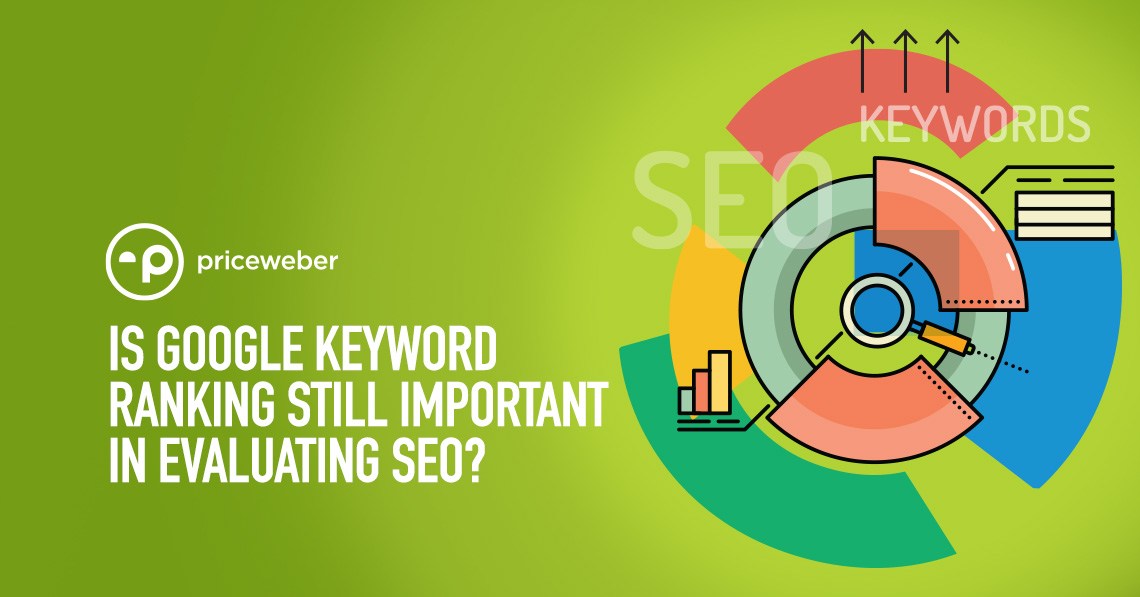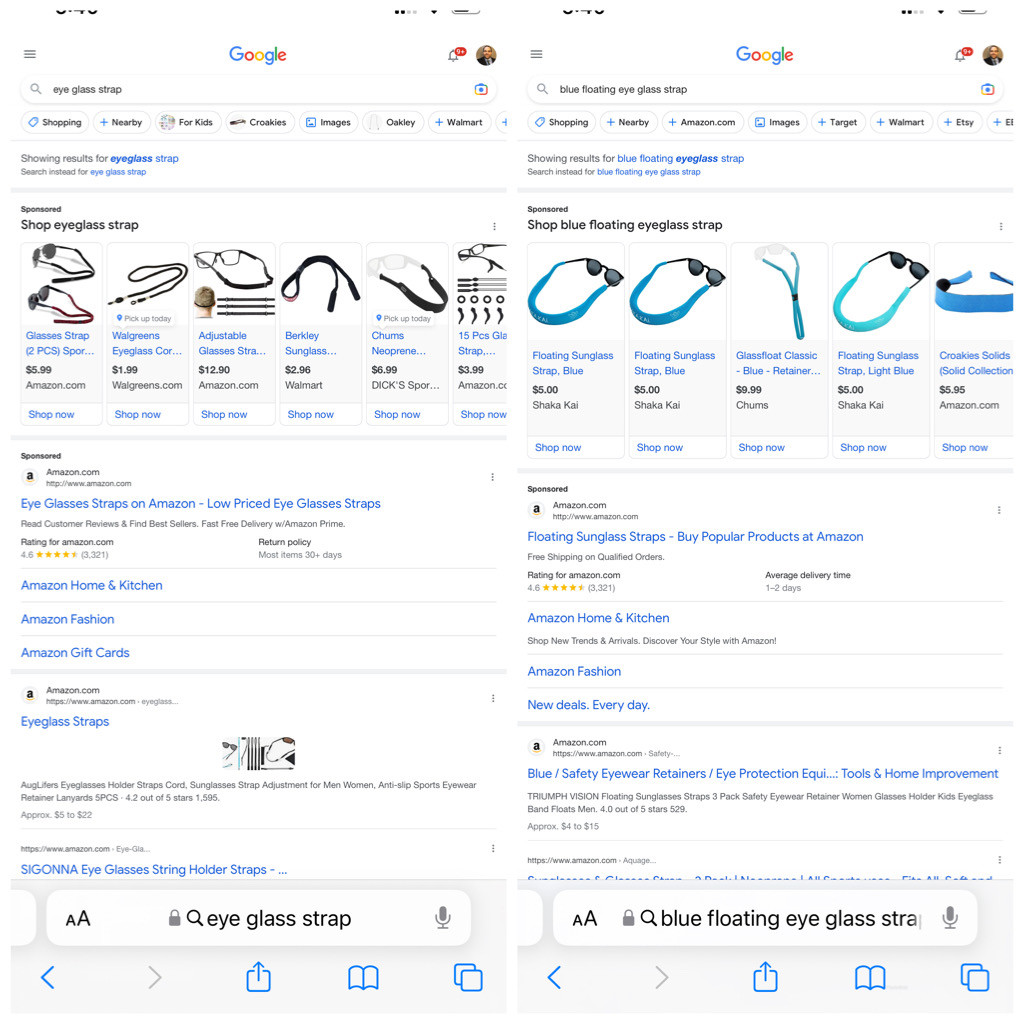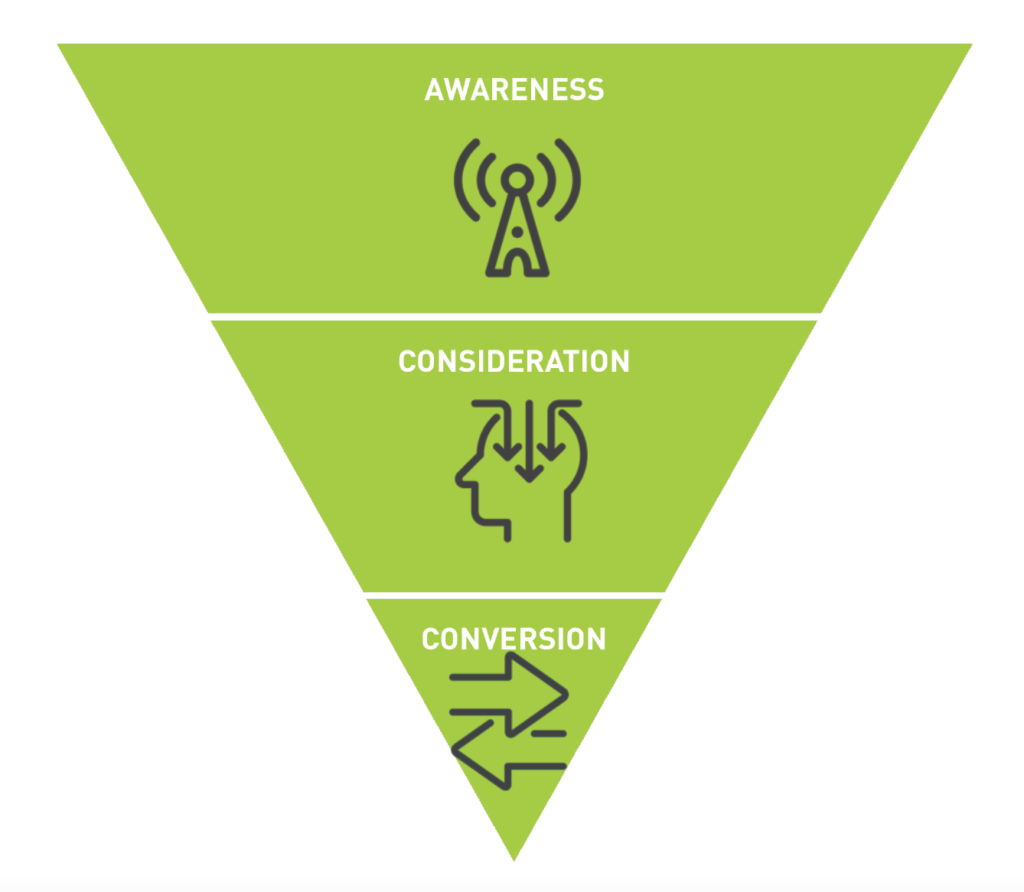Since its beginning in 1997, the goal of SEO has been to prioritize keyword rank position, but should that continue to be the standard as Google continues to weigh personal factors and individualized results? In this edition of Plain Talk, we’ll discuss if keyword ranking is still the best way to measure your SEO and if not, what SEO tools you should use for search engine optimization.
Topics we’ll cover include (If you’re impatient, feel free to skip ahead!):
Is Google AI predicting intent in SERP?
Google’s personalization – Why Incognito and AdWords aren’t enough
Examining SEO from all levels of intent in the sales funnel
Remembering SEO is still just LeadGen
Is Google AI predicting intent in SERP?
As Google has become more sophisticated, traditional organic keyword ranking results are less likely to display on Search Engine Results Pages (SERP). As we’ve reached a threshold where nearly 2/3 of searches are mobile, Google has tailored search to make results more local, more personalized, and more profitable. Through Google’s RankBrain machine learning, it is likely they can even predict whether identical searches are more likely informational, navigational, or transactional in search intent and adjust the page results accordingly based on their knowledge of the user’s data trail and behavior.
Throughout this article, we will reference two searches, a recent search for a floating sunglasses strap for a family member and a search for “ice cream near me.”
Despite my typo “eye glass” vs. “eyeglass,” Google RankBrain corrects both searches with the correct target keywords. Google also shows no local map pack results. Google AI does not expect me to want to buy a glass strap locally or, for that matter, learn the history of glass straps; instead, giving me just quality content. Google recognizes both searches as transactional (e-commerce) intent. RankBrain believes Google’s revenue and my satisfaction will both be optimized by presenting mostly online sponsored results. These search results are consistent with what Platonik found in 2019 when it published that the first organic search result was 480 pixels further below the fold than in 2015.
Likewise, SERP is adjusting for these three similar searches from my exact location on my phone at the same time. When I searched the specific keyword “Ice Cream,” RankBrain assumed my intent was navigational. It assumed I had a car full of kids all wanting different flavors within proximity of local businesses offering ice cream! When I searched for “Cookies and Crème Ice Cream, the second and most visual result was informational in nature, offering up recipes. Then when I searched for “Oreo Ice Cream,” RankBrain provided transactional SERP, with its sponsored shopping ad carousel of couriers all wanting to provide delivery services.
Not surprisingly, searching from a different person’s phone from the same location at the same time for the same search term provided different results. Their search for “Cookies and Crème Ice Cream” had no informational results.
Google’s SERPs personalization – Incognito and AdWords aren’t enough
It’s human tendency to believe the goal line doesn’t move because it’s fixed. We were trained for years to believe that the goal line was a position and that getting top keyword position and having top search engine rankings was how we won in SEO. However, the problem with this is that Google has never been playing the same game as the SEOs, meaning your SEO efforts may not actually be improving your SEO performance. Google doesn’t care about your company’s position or SEO ranking. They care about the integrity and utility of the results to the end user and the revenue per page screen they can generate. Over time through personalization, innovation, and learning, they’ve been able to improve both page utility and revenue.
Since Google launched Incognito mode in 2008, Google Chrome’s privacy mode option, marketers have been using it to spot-check their relative Google rank positions. While this and Google AdWords’ average individual keyword position both eliminate cookies and geographic filters in their reporting and ranking factors, they’re not enough.
Because your customers don’t generally use their phones and laptops to look at web pages in Incognito mode, their SERP experiences are very much affected by their locations and past search experiences. In fact, if your customer base is extremely homogeneous or can be summarized into a few personas, then all or many of your users may be being served similar user experiences that may not be easy to recreate in your lab environment when working on your SEO strategy.
Examining SEO from the funnel
Analyzing how SEO impacts sales will look very different depending on your industry, which is why you need a targeted marketing strategy. Confections will be very different than B2B software as a service.
- Is my product or service an impulse or researched buy?
- Where in the funnel is the search intent from your key search terms, and where is your website traffic actually coming from?
- How important is brand preference? A Ford person isn’t going to buy a Chevy because of its website rank or because it’s first in SERP.
- Where are sales made? Online or at a retailer?
- How important is the Map Pack vs. Organic Results – maybe if you’re a local restaurant, only the Map Pack should matter to you, although Google weighs each as an input in the other, so both are important.
- If SEO is mostly at play at or near the bottom of the funnel, what is our content strategy? Should we mostly focus on high-intent long-tail keyword terms?
- From an ROI perspective which terms should you primarily focus on with SEO vs. SEM vs. both?
- What about comparing your Bing SEO to your Google Analytics?
All these factors should be considered when determining how to best measure the success of your SEO, and you can be assured that the digital marketing guys spamming your social media with promises of top rankings— be it on LinkedIn or your Facebook feed — have no idea about your business nor the desire to learn about it.
Remembering SEO is still just LeadGen
While it’s important to look at SEO from the bottom of the funnel and do high-quality keyword research, it’s also not entirely fair. SEO isn’t responsible for abandoned carts, bad UI, product failings, dysfunctional call centers, or marginal salespeople. At the end of the day, SEO is awareness or LeadGen; it doesn’t close sales.
What’s measured is managed
While search rank position may not be as important to measure as it used to be, it is still crucial that you measure and track something. What this might mean, of course, varies. If you’re GM, maybe being on the first page for the term “off-road truck” is sufficient, given your brand recognition and the nature of the buying cycle. In this scenario, Google Keyword Ranking might still be a metric, only you judge it more loosely. Your rank tracking goal becomes being in the top five or ten.
For non-sophisticated sales cycles where companies have adopted last-touch attribution models (like eyeglass straps), maybe the only thing that matters is a sale and boosting organic search traffic to your page so you measure your SEO results by sales driven from SEO and only adjust for your seasonality.
Another option that might work for many companies is to follow the below-proposed equation.
1. Determine your goal measurement: Impressions, Clicks, or Purchases
2. Use your goal as the numerator
3. Set a global denominator such as Search Volume – which you can get from Google AdWords or SEMRush.
Keyword = Performance Marketing
The advantage of measuring results as a percentage of search volume with organic traffic is that it adjusts for industry and economic changes that you can’t control. The disadvantage is that it can’t be easily automated and will consume resources to track.
In summary:
When we work with our clients in modern search, we consider the vast inputs Google has access to and how Google may place “their customer” in front of your content and product pages. For Google to compete with many search alternatives, knowing the intent of the search query can provide a great starting point to capture a new customer at the correct stage in the buying journey.
The data trails we leave behind help search engine algorithms predict our next moves, which can be at any level of the conversion funnel. As marketers, especially in SEO-related discussions, we need to understand all aspects of customer behavior in our content marketing to capture more customers when competition and supply are plentiful.
By finding the right combination of rich media, including text, video, images, graphs, and targeted social platforms, a brand can leverage intent at all levels of conversion. Google has been explaining this for years by placing great emphasis on content and, more recently, coining the term “Helpful Content” as a much deeper experience to personalized search results.
In the game of dominating search intent, there are no SEO shortcuts as Google becomes more tuned into customer behavior and the type of conversion best suited for a particular search query. So, just like so many other things we do as marketers, search has become increasingly complex and thus more difficult to attribute and measure uniformly.
Figuring it out
Whether your company handles SEO internally or externally, as the marketing leader, you’ll have to sit down and determine with your SEO practitioner how you should measure SEO success based on factors like your brand, product or service, and industry and path-to-market. We hope this article provides fuel for thought in that discussion. Feel free to give us a call at (502) 499-4209 or drop us a note here. We’re always free to chat!






